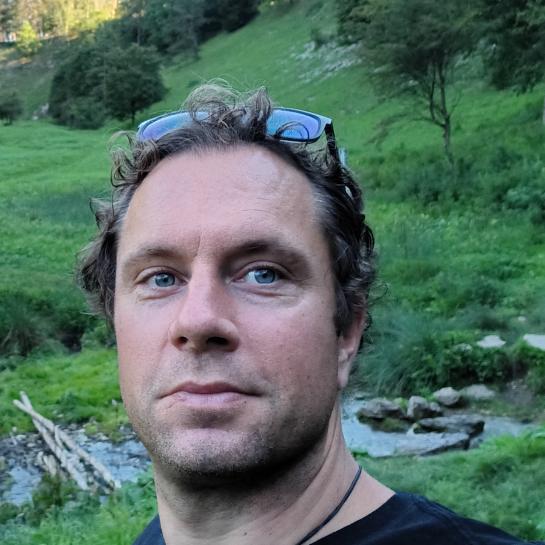
Dr. Inigo Müller
Biography
RESEARCH TOPIC:
My research interest and motivation is to understand changes in climate and ocean chemistry throughout the past and how pristine signatures are preserved or respectively altered in the rock record. Carbonate minerals such as calcite and aragonite are some of the most important constituents of marine sediments that later during burial diagenesis and orogeny form the bright limestone or dolomite cliffs often seen in mountain ranges around the globe. These marine carbonate rocks often contain cements that formed at the ocean floor and fossils from bio calcifying organisms that lived near the seawater surface or at the seafloor. Often the elemental composition of such carbonates including their trace element concentration and stable isotope composition are incorporated in equilibrium with the surrounding seawater. Therefore, geochemical analyses on marine carbonate rocks provides a glimpse into the past ocean chemistry and the paleoclimate.
During my postdocs at the ETH Zurich and the University of Utrecht I gained broad experience with a geochemical tool carbonate “clumped isotope” thermometry (D47). The D47 of a carbonate rock is the relative abundance of the bonds between the rare 13C and 18O isotopes within the gaseous CO2 molecules released during acid digestion of the rock that is analyzed by Isotope Ratio Mass Spectrometry (IRMS). The relative abundance of the 13C and 18O bonds is expected to be solely temperature dependent and allows us to determine the temperature of the seawater or freshwater source in which the carbonate precipitated. Simultaneously, so to say as a bonus, we analyze the carbon and the oxygen isotope compositions (∂13C, ∂18O), which give us important information on local food sources, the primary productivity and most important the ∂18O of the fluid source. I am using this geochemical tool to reconstruct seawater temperature variations and changes in local seawater circulation to better understand past climate conditions in the past.
Another pivotal point in reconstructions of the paleoclimate and environment are processes occurring during burial diagenesis, tectonic activity or magmatic activity. I am highly interested how these various processes affect the pristine signal of marine carbonate rocks and how we can detect these imprints that could strongly falsify our interpretation of Earth surface conditions. Amongst study areas that were affected by such typical geological processes are dolomitized platforms in the Dolomites and the Southern Alps of Italy. At the same time we try to simulate the isolated processes in the laboratory with high pressure and temperature experiments, with the aim to disentangle the various processes affecting the pristine signatures.
During my time at the University of Geneva I worked on the application of radiogenic U-Pb Isotope-Dilution TIMS dating on sedimentary carbonates from the Ediacaran Nama section of Namibia. With stepwise vs bulk leaching experiments. I tested how to optimize U-Pb dating on carbonates to have an alternative way for high precision age constraints in the absence of volcanic ash layers with zircons. The absence of datable ash layers in sedimentary sequences can otherwise complicate or hamper the correlation of sedimentary sequences amongst different basins in the past.
EDUCATION:
- PhD in Natural Sciences: University of Bremen and the Max Planck Institute for Marine Microbiology (Germany), 2009-2013, Oxygen and sulfur isotope systematics during the oxidative part of sulfur cycling.
- Master in Earth Sciences with Major in Geology & Geochemistry at the ETH Zurich (Switzerland) Master thesis: Reconstruction of the climate variations of the last 760 years with a marine high-resolution record on foraminifera from the Gulf of Taranto, 2007-2009.
- Bachelor in Earth Sciences with Major in Geology & Geochemistry at the ETH Zurich (Switzerland) Bachelor thesis: Der Ägerisee und seine Sedimente als paläoseismisches Archiv (The lake Ägeri and its sediments as a palaeo-seismic archive), 2004-2007.
Location
Pleinlaan 2 - VUB
Vrije Universiteit Brussel
1050 Brussels
Belgium
